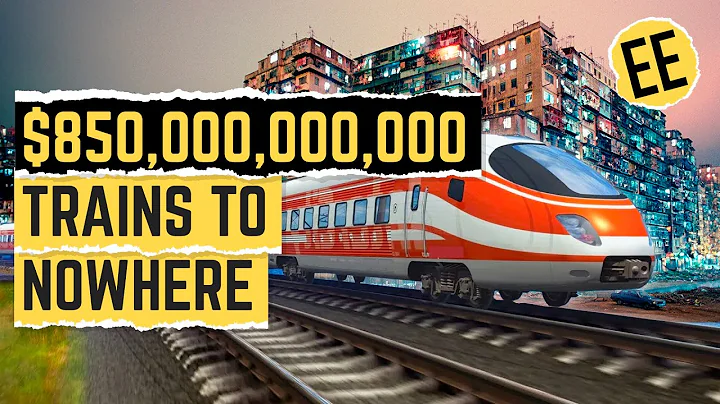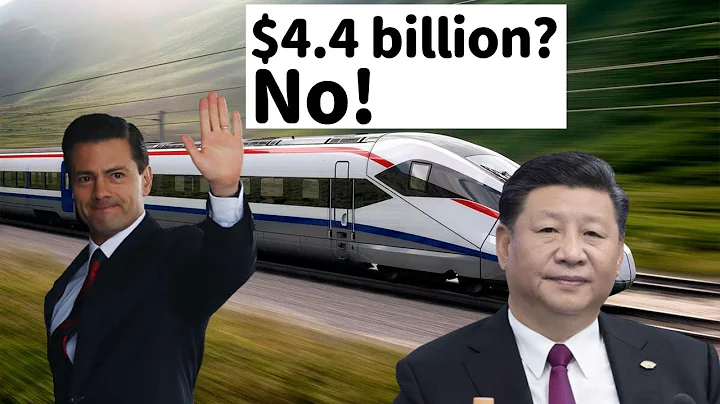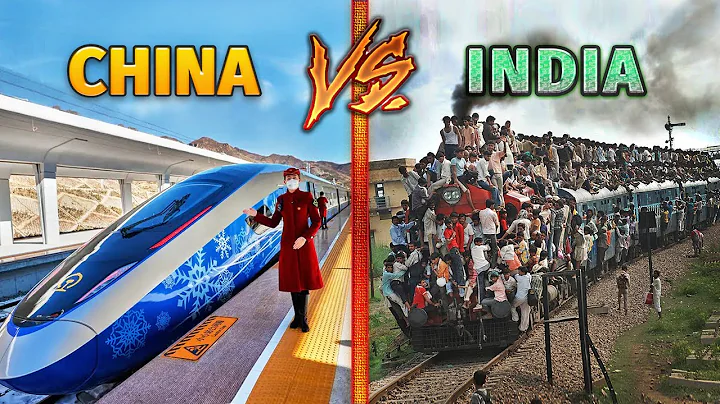
Western railway technology has entered China for more than 150 years. Most historians regard the history of China's railways as a branch of economic history, focusing mainly on the impact on society after the completion of the railways. Studying the history of railways from the perspective of the history of technology is conducive to solving many key issues in railway history. It is an important part of the history of modern technological exchanges, industrialization and industrial heritage, and has unique academic value .


Original text: "The perspective of technological history assists the study of Chinese railway history"
Author | Professor Duan Hailong, Institute of History of Science and Technology, Inner Mongolia Normal University
Pictures | Network
Historical circles intervene in the study of Chinese railway history
Modern railway technology emerged in the 19th century The UK in the 1920s and 1930s was an important achievement of the first industrial revolution of . In the mid-1830s, newspapers sponsored by missionaries in China first introduced news about Western railways to China. In the late 1830s and early 1840s, reports on railways and steam locomotives began to appear in works compiled by the Chinese, such as "The Chronicles of the Four Continents", "The Maps of the Sea", "The Chronicles of Yinghuan", etc. The earliest physical railway in China was a section of narrow gauge built by British businessmen outside Xuanwumen in Beijing in 1865. It was shown to the public in the form of a performance and was soon ordered to be dismantled. In 1876, the first operating railway on Chinese soil appeared between Shanghai and Wusongkou. It was organized and built by foreign businessmen in China. After one year of operation, it was acquired by the Qing government and then dismantled. The Tangxu Railway built in 1881 was the first railway built by the Chinese initiative. The road gradually extended to both ends, eventually forming the Beijing-Fenghuang Railway . In 1905, Chinese engineers represented by Zhan Tianyou for the first time did not With the help of foreign funds and foreign technical personnel, the independent construction of the Beijing-Zhangjiakou Railway became a milestone in the history of China's railways and opened an era of independent railway construction for the Chinese.
Western railway technology has entered China for more than 150 years. The construction and development of China's railways are accompanied by China's modernization process. As an indispensable means of transportation in modern society, railways have a catalytic effect on social changes. The historical community first became involved in the study of China's railway history, mostly as a branch of economic history, focusing on the impact on social politics, economy, culture and other aspects after the completion of the railway, and has produced relatively fruitful results. These results focus on the relationship between railways and social economy, involving important figures and institutional structures, and some also explore some issues in China's railway construction from the perspectives of finance and diplomacy. Overall, current research on China’s railway history mainly focuses on the relationship between railways and social changes, with less discussion from the perspective of technological history.

Places the history of railways from the perspective of technological history
As an important representative of the industrial revolution, railway technology is rich and complex, and is closely related to social factors. Researching railway history from the perspective of technological history is conducive to solving many key issues in railway history. At present, the relevant research in the academic circle is still very weak, and there is a lot of room for breakthroughs. places railway history under the perspective of technological history, which has the following research significance. The significance of
as a general history of technology research. The history of technology mainly studies the invention, development, exchange, selection and interaction between technology and society, and explores and supplements the history of human civilization. Railway is a complex technical system, including mechanical technology, material technology, energy technology, etc. Technological changes will have an important impact on railway development. Railway technology has both inheritance and innovation during its development process. It also interacts with other technologies and is restricted by many social factors. The history of railway technology reflects the evolution of technology in the process of industrialization and has become a distinctive landscape in the history of human civilization.An in-depth study of technology in railway history is not only of great academic significance, but also serves as an important reference for the development of today's industrial technology.
is an indispensable and important content in industrialization. Industrialization is an important stage in the history of human civilization, and its impact on mankind is unparalleled to this day. Railway technology is a major component in the industrialization process and plays a role in promoting the industrialization of human society. In China, the process of industrialization is the process of China's modernization, and railways also play a vital role in China's modernization. As a product of industrial society, railway technology is very different from traditional handicraft technology, and its systematization and standardization characteristics are particularly obvious. As a product of the first industrial revolution, railway technology has a distinct industrial background. Therefore, railway development is unique and restricted by industrial base, talent reserves, and technical capabilities. The innovation process of railway technology is the epitome of industrial development. A history of the development of China's railway technology is a history of modern China's industrial development.

is a research case of modern technology transfer to . The history of railway development in modern China is the history of the transfer of Western railway technology to China, and also the process of localization of Western technology in modern China. China's modernization is not only accompanied by industrialization, but also the process of the spread of Western technology to China. The introduction of railways into China as an advanced technology has objectively accelerated China's modernization, but this cannot deny the original aggressive intention of Western powers to import railways into China. In this regard, the introduction of railway technology into China at that time had a colonial character. In terms of technology, the process of railway construction and development in modern China was the process of Western technology systems penetrating into China. Technically, the selection of track gauge, the formulation of locomotive standards, the setting of operating signals, and the use of management systems are all deeply marked by colonialism. The routes controlled by each country go their own way, which seriously hinders the implementation of networked railway transportation and delays China's absorption and autonomy of railway technology. The history of railways in modern China is an important case of the outward expansion and transplantation of advanced technology. It not only has important academic value, but also has important practical significance.
provides academic support for the protection and research of railway heritage. As an important part of cultural heritage, industrial heritage is the imprint left by industrial activities and is the bearer and witness of human industrial civilization. Industrial heritage has historical value, technological value, artistic value, cultural value, economic value and social value. But its technical value is the core value and the basis for other values. As far as the protection and research of industrial heritage is concerned, the work of technological history should bear the brunt, so that its core value will not be lost during the protection process and the phenomenon of "destructive protection" will be prevented. Railway heritage is the main content of industrial heritage. It leaves people with the most profound characteristics of the industrial era with its unique linear architecture, landmark buildings in towns along the line (such as stations), and the resulting social activity circles and lifestyles. impression. Due to railway technology updates, route changes, rolling stock replacement and other reasons, a large amount of railway heritage has emerged. These heritages are ironclad evidence of the development of railway technology, a symbol of the progress of industrial civilization, and have universal value as industrial heritage. Research on the history of technology can reveal the core value of railway heritage and provide strong academic support and intellectual guarantee for the protection and research of railway heritage.

Research on the history of railway technology has particularity
Railway technology has its own characteristics, and the research on railway history from the perspective of technology history also has its particularity. The research on the history of railway technology is rich in content and diversified in research methods.
research content is rich. Railway technology can be roughly divided into four categories: line technology, rolling stock technology, ancillary facility construction technology and signal management technology. Line technology focuses on civil engineering technology, including survey, design, line selection, material selection, and laying technology. Among them, bridges and tunnels are difficult points in railway route construction, requiring high professionalism and being a complex and arduous technical link.Even if the same level of technology is used in the same historical period, the implementation of engineering technology will take on different forms due to different construction environments. This reality demonstrates the richness of research on the history of railway engineering technology. Not only large-scale projects such as bridges and tunnels, but also the processing and renewal of sleeper materials, the optimization of rail composition, etc. are also treasures that can be mined in the history of railway technology. Locomotive technology is even richer. Steam locomotives, electric locomotives, diesel locomotives and now EMUs have complex structures and rapid technological changes. They are the subject of a special book in the history of technology. Railway ancillary facilities, such as station buildings, are important places to ensure the normal operation of the railway, connect local areas and railways, and provide transportation of passengers and goods. They involve many aspects such as construction technology and train operation management. Railway operation is a systematic project that also involves a variety of technologies, such as signal management, which is very important. In modern China, China's railways were influenced by foreign countries, and the signals of each line were inconsistent, which led to the inability to smoothly implement intermodal transport between different railways, reducing the efficiency of railway network transportation. The history of modern Chinese railways also contains a history of the evolution of railway signals.

research methods are diverse. Railway technology is complex and diverse. To study the history of railways, you first need to master the knowledge of railway technology, and cannot only seek arguments from historical documents. It is a conventional technology history research method to explore the development, innovation and interaction between railway technology and society under the background of modernization. In addition, it is also necessary to learn from research methods from other disciplines. First, as an industrial product, railways have relatively rich relics, and the use of physical objects for research is an important method for studying the history of railway technology. Museums, especially professional museums such as the Locomotive Museum, preserve locomotives with important historical value, providing physical evidence for studying the history of locomotive technology. The existing abandoned lines are also ironclad evidence for exploring the route design, track laying technology, use of rails and sleepers at that time. Second, as witnesses and practitioners of modern technology, railway technical workers, especially those who have participated in major technological reforms, have more historical facts beyond written records, so oral history is particularly important. The work of oral history must be timely and needs to be mutually corroborated. Research methods on railway history should be as diversified as possible and can be used as long as they are scientific, reasonable and conducive to solving problems in technological development. The article
is an original product of Social Science Journal’s “Thought Workshop” Fusion Media. It was originally published on Page 5 of Issue 1810 of Social Science Journal. Reprinting without permission is prohibited. The content in the article only represents the author’s opinion and does not represent the position of this newspaper.

Extended reading
record | 40 years, extending from 48,600 kilometers to 127,000 kilometers, this is China’s railway!
Historical folklore: play a more unique academic function | Journal of Social Sciences






















